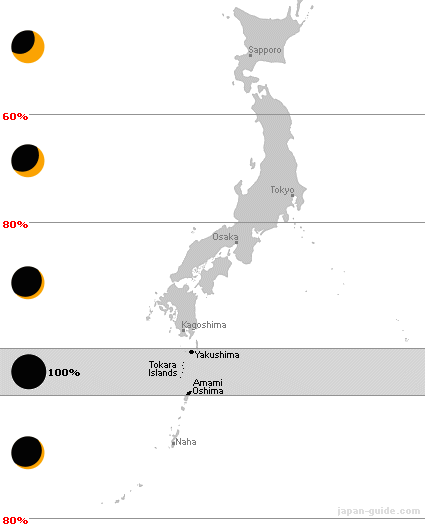Kum zabu 21 chung, Nika dawpdolh vialte lak sau cem rau ding cu July 22 ah hin Asia ram zeimawzat in hmuh khawh dingin an chim. Nika apil dih cikcek chung hi minute 6 le 39seconds arau lai e an ti. Atu bantuk hi June 13, 2132 lawng ah um te dawh asi hika ning ah cun. Japan cu Tokara Island in alangh ning a ttha cem lai an ti i, aphu phu in mitam pi ariak in an kal len cang. Tokyo ah cun zinglei 11:13am ah zeimawzat lawng hmuh khawh asi lai.
Ju

(Source: www.japan-guide.com)

(This image shows the solar eclipse’s annular path on July 22, 2009. The different shades of red depict the eclipse's visibility, with the strongest and innermost shade depicting 75 percent visibility, followed by 50 percent visibility, 25 percent visibility, and down to as low as zero percent visibility. The maximum eclipse is visible at various locations. source: www.timeanddate.com)
Hika le Hika hi rel hna hmanh! Zoh nuam tuk an si, vulei fimnak asang chin leng mang i.
Atanglei hmanthlak hi dawpdolh umtuning cang an suaimi asi. A piang ngai.

(The diagram above shows the alignment of the Sun, Moon and Earth during a solar eclipse. The dark gray region below the Moon is the umbra, where the Sun is completely obscured by the Moon. The small area where the umbra touches the Earth's surface is where a total eclipse can be seen. The larger light gray area is the penumbra, in which only a partial eclipse can be seen. Source: www.knt.co.jp)



No comments:
Post a Comment